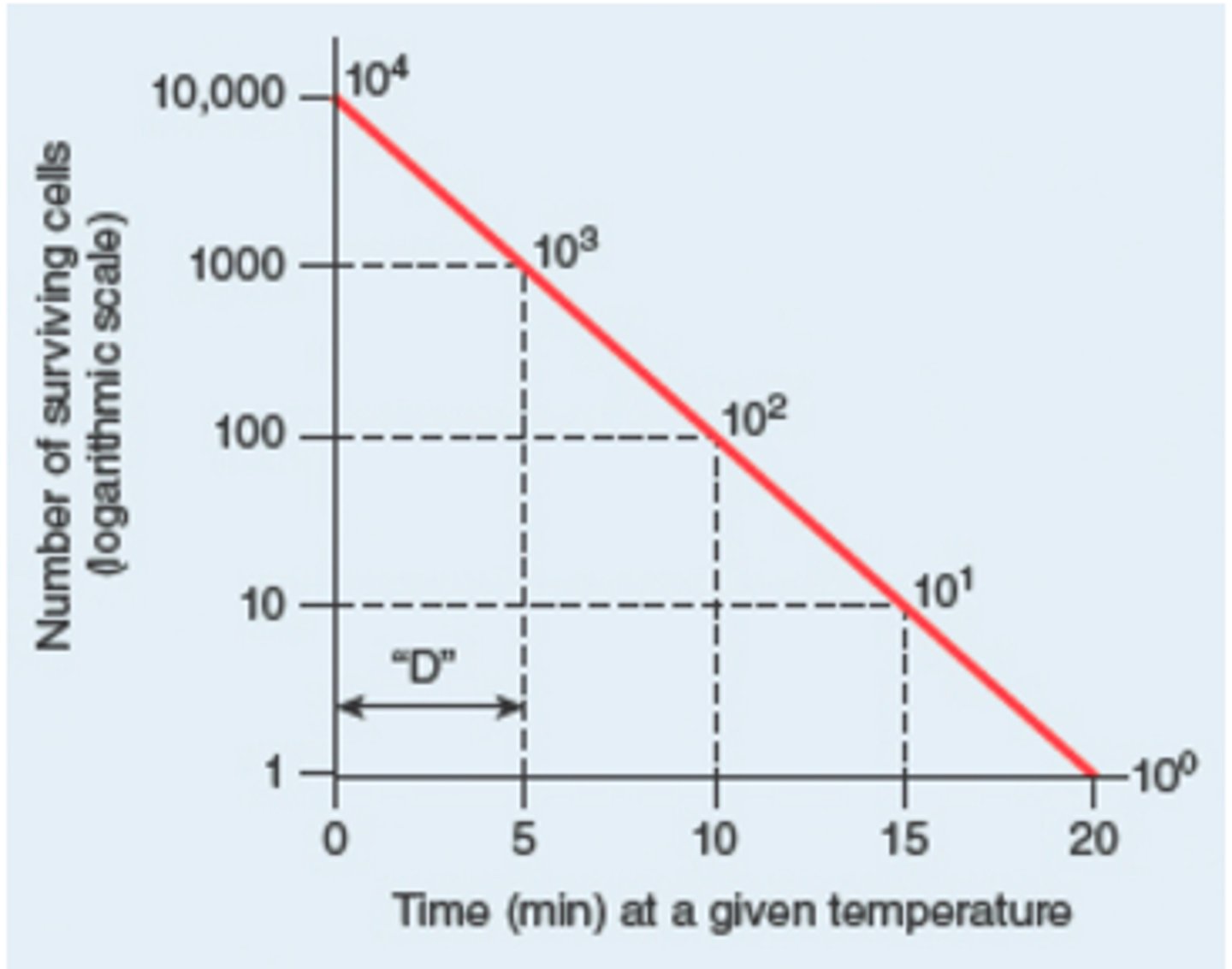MCB 100 Lecture 32: Controlling Microbes in the Environment-Physical Methods
1/15
There's no tags or description
Looks like no tags are added yet.
Name | Mastery | Learn | Test | Matching | Spaced |
|---|
No study sessions yet.
16 Terms
Safe Handling of Pathogens and Biohazardous Material
4 Biosafety Laboratory Containment Levels:
Biosafety Level 1- Lab adapted non-pathogenic E.coli.
Handling pathogens that do not cause disease in healthy humans
Biosafety Level 2- Whooping cough, E.coli, Salmonella, Staphylococcus
-Handling mildly biohazardous agents (that could cause harm) in biosafety cabinets
-Using personal protective equipment (PPE): gloves, eye ware, and lab coats.
Biosafety Level 3- Bacillus anthracis (Anthrax), COVID-19, Tuberculosis, Flu, Plague
-Handling highly pathogenic, infectious, or toxic microbes (for which there are treatments) in biosafety cabinets using PPE.
-Using special facility with high-efficiency particulate air (HEPA) filters.
Biosafety Level 4- Ebolavirus, Marburg virus, Lassa virus, Spanish Influenza.
-Handling highly infectious pathogens that cause deadly disease (for which there are no treatments)
-Require special lab facilities with special air-handling equipment and special PPE.
Microbial Control
Best first defense is prevent pathogen from entering the body in the first place.
-Wash hands with soap
-Use PPE: glove, protective clothing, masks, etc.
-Avoid direct contact with sharps: needles, abrasives, inhalation, ingestion
Disinfectants and antimicrobial agents
Natural (antibiotics, natural acids like vinegar or citrus juice)
Artificial (chemicals, drugs detergents) agents that can be used to kill or slow down growth of microbes.
Some can be used externally on inanimate objects (disinfectants, sanitizers)
Some can be used on body surfaces (antiseptics, germicides).
Some are safe to ingest or inject (antibiotics, antimicrobials)
Sterilization
The removal of all forms of life (microbial) from a surface or substance (object or fluid) achieved by treatment with heat, chemicals, irradiation, high pressure, or filtration.
-Sterilization is distinct from disinfection, sanitization, and pasteurization, which reduce the microbial load but do not eliminate all forms of life present.
Antimicrobials (antibiotics)
are any substances that kill or inhibit growth of microbes like bacteria, fungi, parasites, and viruses.
Two categories:
1. Microbicidal (Germicidal)- kill the microbe (germ)
ex. Bactericidal antibiotics: lyse and kill bacteria
Note: lysing of bacteria during sepsis can lead to worse disease consequences due to the release of endotoxin or other toxins.
2. Microbiostatic- prevent the growth of the microbe.
ex. bacteriostatic antibiotics stop or slow down bacterial growth, but the bacteria are not killed. Frequently, the bacteria can recover and grow again once the antibiotic is removed (antibiotic tolerance)
Microbial Death
permanent loss of reproductive ability of a microbe under ideal environmental conditions
Microbial Death Rate
Often a constant rate for any given microbe under a particular set of conditions
D-values (decimal reduction time)
The amount of time it takes for each round of 90% killing to occur (ex. 1 D-value = 90% dead, 2 D-values = 99% dead, 3 D-values = 99.9% dead etc.)

Filtration (Physical Sterilization)
Separation through a filter- This method of sterilization is being used for heat-sensitive solutions that can't be heat-sterilized like certain medicines, vitamins, some amino acids, cosmetics (BoTox), and cold-filtered beer.
-Bacteria are generally larger than 0.5 um in diameter. If you pass a fluid through a filter with a pore size of 0.2 um, bacteria, yeast and other larger microbes or particles will be trapped.
Exam: Given a specific filter size, could you choose the organisms that would or wouldn't be filtered out
Could you choose the smallest or largest organism present on the filter or in the solution?
Physical Methods of Microbial Control -Heating
Heating-inactivates or kills all kinds of microbes, including bacterial spores and viruses, depending on the method used
-Pasteurization
-Dry Heating or baking
-Boiling
Pasteurization (Heating)
-Food is heated for a specific length of time at a specific temperature.
-Unlike sterilization, all of the microbes are NOT killed; their numbers are just reduced. Intent is to reduce spoilage due to reduced microbial growth.
Dry Heating or baking
Dry heat sterilization process involves conduction: heating the exterior surface of an item to eventually heat the entire item to the desired temperature.
-dry heat removes moisture and oxidizes proteins and lipids.
Boiling
This moist-heat sterilization process involves heating at boiling temperatures.
-Boiling for 30 minutes will kill virtually all vegetative bacterial cells, but NOT SPORES.
Tyndallization: uses 3 consecutive steam/boil treatments over 3 days to achieve sterilization. COMPLETE STERILIZATION. KILLS SPORES.
Autoclaving (Physical Sterilization)
Heating: Pressure cooking-autoclaving (steam heat under pressure)
-Pressure heat denatures microbial protein and often lyses cells.
UV irradiation (non-ionizing)
UV light is a form of non-ionizing irradiation that can be used to kill microbes.
-does not penetrate surfaces
-can lead to increasing frequency of mutations
Ionizing irradiation (physical sterilization)
can eliminate disease-causing microbes (bacteria and parasites) from foods or other material by treating the items with approved levels of ionizing (high energy radiation)
-The size of the DNA is a factor in how readily a microbe is killed: Parasites and insects= rapidly killed, bacteria and bacterial spores =easily killed, viruses= less effective, proteins (prions or toxins) = not at all.
-Irradiated food generally has longer shelf life and does not spoil as readily.
Three types of irradiation methods:
1. Radioactive y-rays- high energy photons from radioactive material are capable of high penetration.
2. Nonradioactive electron beams- stream of high energy electrons produced by an electron gun ( no radioactive material involved). penetrates ~3cm.
3. Nonradioactive x rays - an electron beam is directed at a thin plate of gold or other metal to produce x-rays (more powerful than medical machines, no radioactive material involved) that can penetrate foods up to 15"